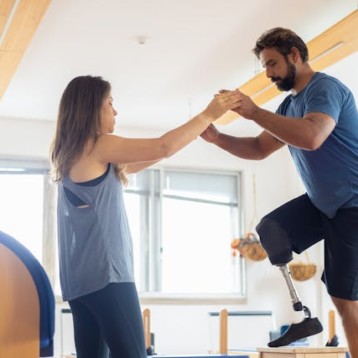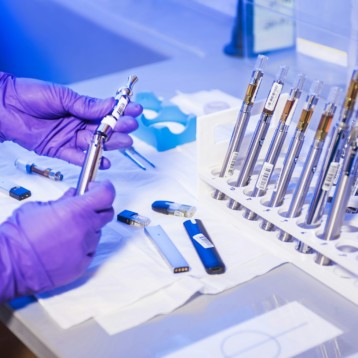
The pandemic has shifted perceptions about health, managing conditions, and the healthcare system overall. While the impact of COVID-19 continues to disrupt our old way of life, humans have learned from the experience. Primarily, these learnings have shifted how we manage our health, even making positive changes along the way.
1. Virtual Appointments Have Become the Norm
Before the pandemic, most people would have to take time away from work to attend a doctor’s appointment. While some needs still require an in-person assessment, other consultations and conversations are being done virtually.
The forced adoption of virtual appointments had doctor’s offices and health systems initially scrambling along with everyone else. Today, many routine appointments, mental health therapy sessions, and minor illnesses can be addressed over a phone or video. Medications like birth control, acne treatment, and other medications can be prescribed online. Virtual visits can even reduce “white coat syndrome” by putting more distance between patients and fear-inducing medical settings.
When you’re sick, the last thing you want to do is trek to the doctor’s office. The advancement in care represented by telehealth helps immunocompromised individuals and families reduce exposure to highly transmissible illnesses beyond COVID-19. Patients can regain time in their schedule by logging onto their appointments during a break from work for personal tasks. With virtual appointments part of the new healthcare service model, both providers and patients can connect anytime, anywhere.
2. Patients Are Addressing Their Health More Proactively
Making a doctor’s appointment can be a hassle. Many people avoid the issue altogether, stating inconvenient appointment times, excessive distances, and cost as factors in their avoidance. After experiencing the pandemic firsthand, many people are rethinking their reluctance to manage their health. Whether they’ve avoided seeking care for fear of diagnosis or inconvenience, many have been encouraged to finally address their health concerns head-on.
The vigilance surrounding COVID-related symptoms and increased risk for those with comorbidities placed an unavoidable fact at the forefront. Having poor general health increases the risk of contracting illnesses and reduces the body’s ability to fight against it.
Patients can take the first step toward better health by getting a baseline assessment from their healthcare provider. Long-standing symptoms could warrant a physician’s opinion. Strange lumps, pains, or inability to conduct daily tasks are red flags that should encourage individuals to get care promptly.
3. Americans Are Finally Prioritizing Mental Health
Before 2020, the common theme among Americans with regard to work was to hustle and then hustle some more. The pandemic put a halt to the hustle culture that was roaring through the working world, especially among Millennials.
Instead of clocking 12-hour days in the office and playing water-cooler politics, many employees went remote. Layers of bureaucracy, gossip circles, and antiquated ways of working were immediately revealed. And beneath many of them lay a severe nationwide mental health issue.
Americans are stressed, and much of it stems from the way we live our lives. Add the stress related to pandemic isolation, economic disruption, and health issues, and you’ve got a recipe for a mental health crisis.
Thankfully, individuals began to seek out mental health assistance — so much so that therapists are overbooked. The overload is indicative of a greater need, which had been largely unmet due to social stigma and overall accessibility. Speaking about mental health, treatment, and challenges has become commonplace, which can encourage sufferers to seek the help they need.
4. People Are Self-Managing Their Health Concerns
The pandemic caused a shakeup in the healthcare system. For the first time in recent memory, hospitals were full, and the availability of emergency care was threatened. The risk of emergency rooms being full proved just the motivation some patients needed to finally get their health in check. When a community better manages its health, those with true emergencies have greater access to life-saving care.
Today, many people are taking charge of their health, and much of this is happening at home. Medical wearables allow patients to self-monitor chronic health conditions, while an array of at-home tests can even help diagnose them. Patients can closely monitor blood draw results and risk factors such as weight, stress, and pre-existing conditions.
Online charting systems are now commonplace, granting greater transparency for patients after and between in-person doctor’s visits. Over time, patient results can help identify health trends that are improving and those that need to be monitored.
How We’ll See Healthcare in the Future
The headway that’s been made in healthcare and Americans’ current prioritization of health is strongly influenced by recency bias. The pandemic and its effects are still top of mind. Many people and their loved ones have had COVID-19. Others may have been impacted by a death from the coronavirus. The wounds associated with the pandemic are fresh, but over time they will lessen.
In your family, you can prioritize regular checkups with your physicians and vision and dental providers. If they’ve prescribed medication or a treatment protocol, take it seriously and devote the time you need to complete it. Protect your personal time, which allows you to destress, exercise, and enjoy relationships with close friends and family. When you make your health a priority, you can live your best life possible.










